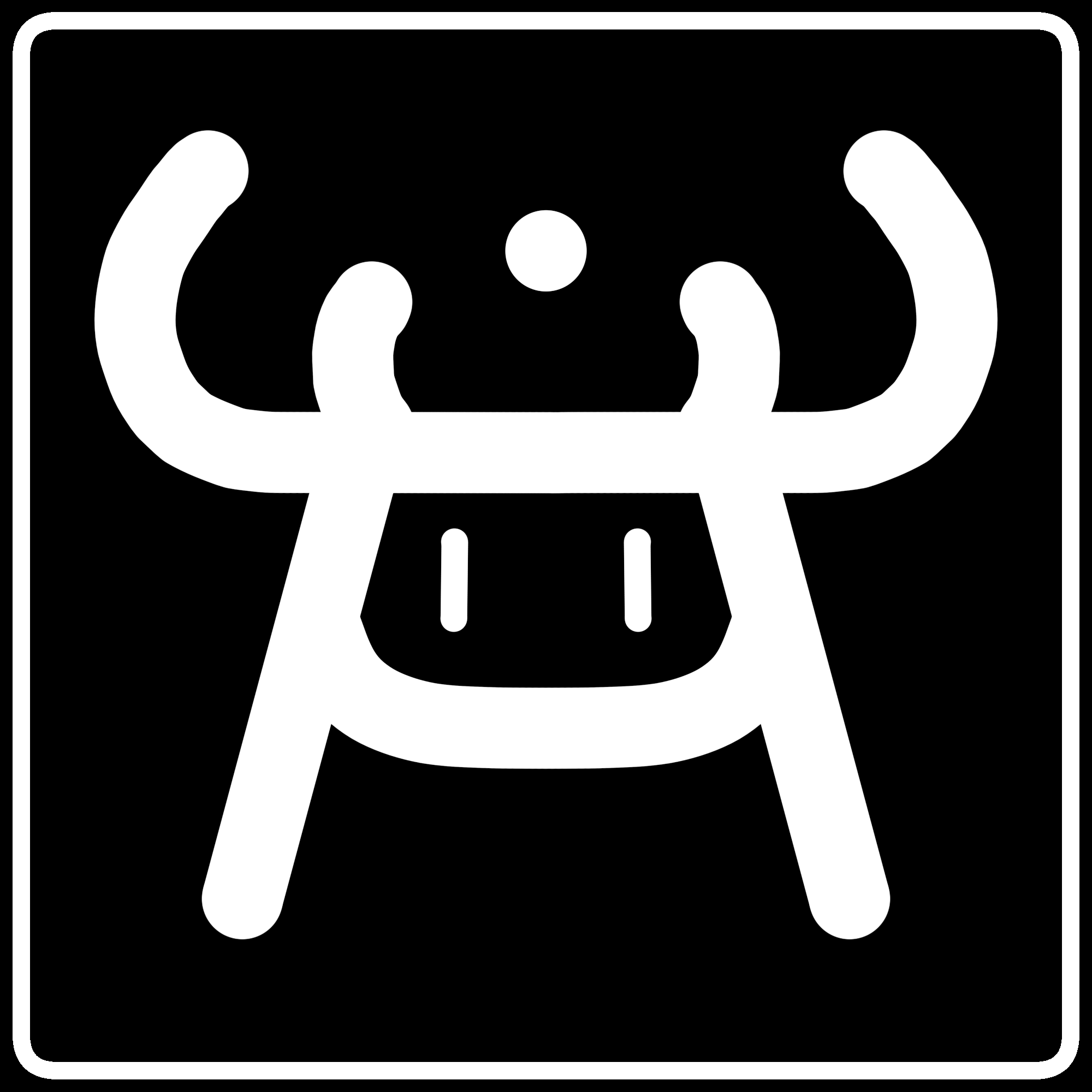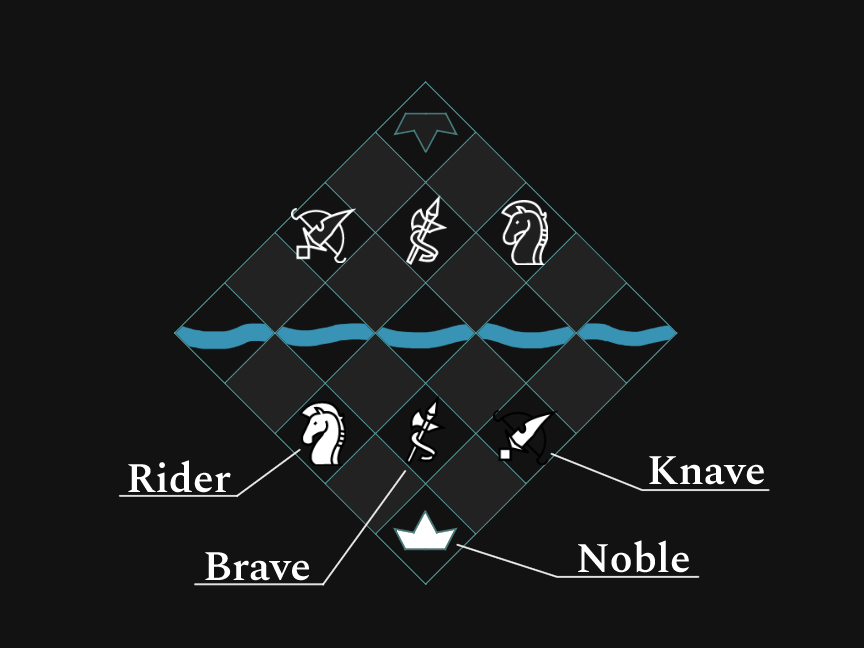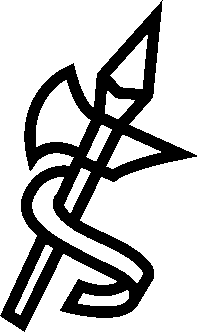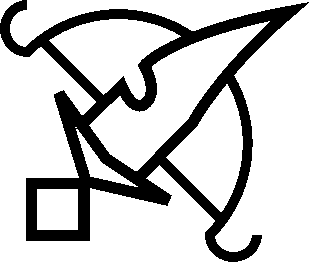How To Win
There are two ways to win RBKN. A player can take each of their opponent's three pieces, or they can move one of their pieces onto their opponent's "Noble" square and have it stay there during their opponent's next turn.


Lead your band of heroes in a fast-paced 3v3 clash. RBKN (ˈrü-bi-ˌkän) is easy to pickup with deceptively sophisticated mini-chess gameplay that will have you mastering your tactics and strategy. Play with a friend in the office or on the go and begin your assault across the river.
There are two ways to win RBKN. A player can take each of their opponent's three pieces, or they can move one of their pieces onto their opponent's "Noble" square and have it stay there during their opponent's next turn.

Place the board diagonally between both players where their Noble is closest to them. Arrange the three pieces according to the diagram (Rider on the left, Brave in the middle, and Knave on the right).

The Rider moves in an L-shaped pattern, moving two squares in one direction followed by one square in a perpendicular direction. The Brave may capture enemy pieces by landing directly on them.

The Brave moves in a straight line along contiguous squares. The Brave may capture enemy pieces, but in order to do so, there must be at least one empty square between the Brave and the enemy piece. Once an enemy piece is captured, the Brave stays on the adjacent square closest to its original position - "stopping short" of the square where the enemy piece was.

The Knave moves in a straight line along the diagonals of squares, and may capture enemy pieces in any of its eight adjacent squares (even the ones not on diagonals). However, the Knave may only attack or move in a single turn, not both.
The River runs along the five diagonal squares that are the widest part of the board. If the Rider or Brave want to move to a square that involves crossing a square with the river on it, that piece must stop on the river square, ending the turn.